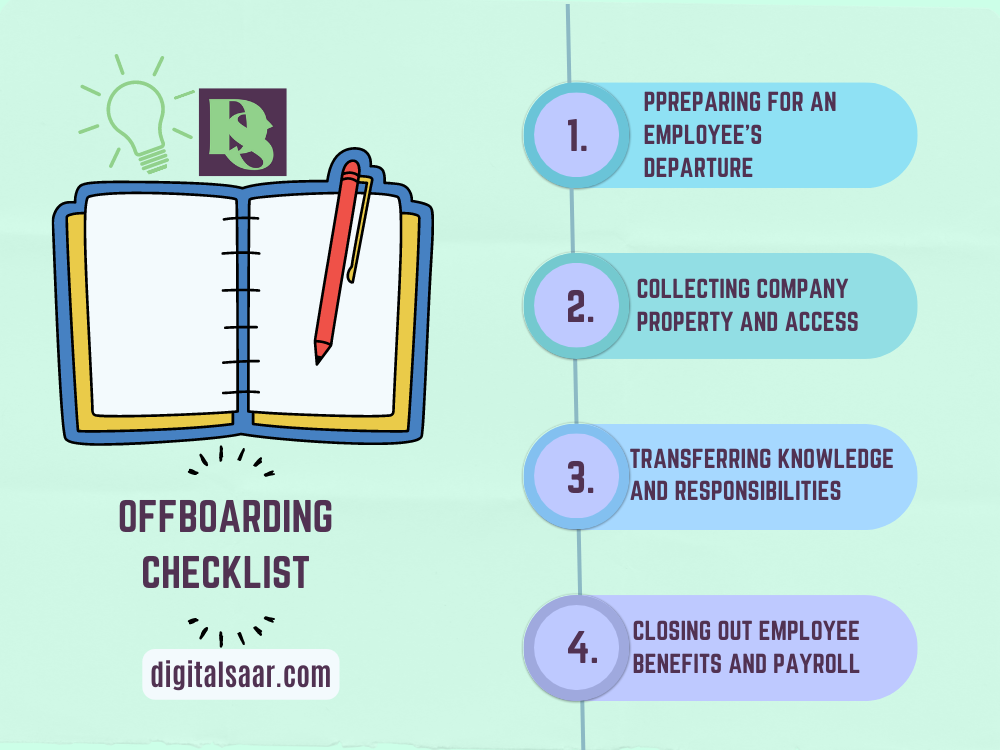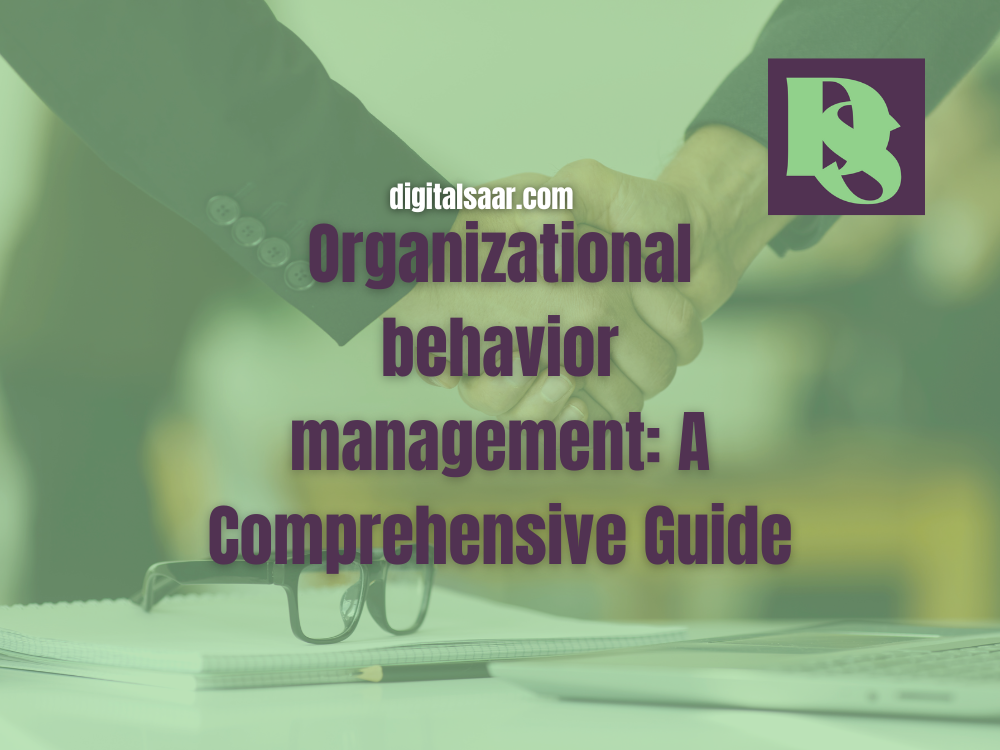When it comes to employee retention, most companies focus on onboarding, which is the process of introducing new employees to the company and its culture. However, equally important is the process of offboarding, which is the process of gracefully exiting an employee from the company. It ensures that the departure of an employee is not only smooth but also beneficial to the company. In this blog post, we will provide a complete guide to offboarding.
What Is Offboarding?
Offboarding is the process of transitioning employees out of an organization. It involves terminating an employee’s access to company systems, collecting company property, transferring knowledge and responsibilities, conducting exit interviews, providing support and resources, and closing out employee benefits and payroll. The goal of it is to ensure a smooth and professional exit for both the employee and the company.
What Is The Difference Between Onboarding and Offboarding?
While offboarding is the process of managing an employee’s departure from the company, onboarding is the process of managing their arrival. Onboarding is a critical process that ensures new employees feel welcome, supported, and prepared to perform their job responsibilities.
Here are some of the key differences between onboarding and offboarding:
- Purpose: Onboarding aims to welcome and prepare new employees for their job responsibilities, while offboarding aims to manage an employee’s departure from the company in a professional and efficient manner.
- Timeline: Onboarding typically takes place over several weeks or months, while offboarding can happen over the course of several days or weeks, depending on the circumstances.
- Focus: Onboarding focuses on introducing new employees to the company culture, policies, and procedures, while offboarding focuses on knowledge transfer, property collection, and other logistical matters.
- Team involvement: Onboarding typically involves a new employee’s manager, HR, and other team members, while offboarding involves HR, IT, and other relevant departments.
- Tone: Onboarding has a positive and welcoming tone, while offboarding can be more somber and professional.
Overall, both onboarding and offboarding are important processes that ensure a positive and professional experience for employees throughout their employment journey. By effectively managing both processes, companies can build strong relationships with their employees and ensure a smooth transition both in and out of the company.
What Is Offboarding Checklist?
An offboarding checklist is a list of tasks that need to be completed during an employee’s departure. Here are some of the critical items on an offboarding checklist:
- Preparing for an employee’s departure: Communicate with the employee and other team members about the departure. Notify HR, IT, and other relevant departments.
- Collecting company property and access: Collect all company property, including keys, badges, and laptops, and terminate the employee’s access to company systems.
- Transferring knowledge and responsibilities: Ensure that the departing employee’s knowledge and responsibilities are transferred to another team member. Create a knowledge transfer document.
- Conducting exit interviews: Conduct an exit interview to understand the reasons behind the employee’s departure, gather feedback, and identify areas of improvement.
- Providing support and resources: Provide support to the departing employee, such as career counseling, job search assistance, and resume writing help.
- Closing out employee benefits and payroll: Cancel all employee benefits, such as health insurance and retirement plans, and issue the final paycheck.

What Is Offboarding Policy?
An offboarding policy is a set of guidelines and procedures for managing employee exits. A comprehensive offboarding policy should cover the following areas:
- Notification requirements: The policy should outline the steps that need to be taken when an employee resigns or is terminated.
- Security protocols: The policy should define the security protocols for collecting company property and terminating access to company systems.
- Knowledge transfer: The policy should include procedures for transferring knowledge and responsibilities to another employee.
- Exit interviews: The policy should include guidelines for conducting exit interviews.
- Support and resources: The policy should outline the support and resources that will be provided to departing employees.
- Compliance requirements: The policy should ensure that the company is compliant with legal and regulatory requirements.
What Is Offboarding Email?
An offboarding email is an email sent to colleagues, clients, and other stakeholders announcing an employee’s departure. Here are some of the things that should be included in an offboarding email:
- The employee’s last day of work
- The reason for the departure (if applicable)
- A brief summary of the employee’s contributions to the company
- Contact information for the departing employee (if desired)
- A message of appreciation and best wishes for the employee’s future endeavors
What Is Offboarding Software?
Offboarding software is a tool that automates the whole process, making it more efficient and effective. There are various types of offboarding software available, including:
- HR software: HR software can be used to manage the offboarding process, including terminating access to company systems and canceling employee benefits.
- Knowledge management software: Knowledge management software can be used to transfer knowledge and responsibilities from the departing employee to their replacement or other team members.
- Employee offboarding software: It is designed specifically for the offboarding process, and it can help automate tasks such as exit interviews, collecting company property, and providing support and resources to the departing employee.
What Happens in Offboarding?
The offboarding process can vary depending on the company and the circumstances of the employee’s departure. However, some common steps in the offboarding process include:
- Preparing for the employee’s departure: This includes notifying HR, IT, and other relevant departments about the departure, communicating with the employee and other team members, and planning the knowledge transfer process.
- Collecting company property and terminating access to company systems: This includes collecting keys, badges, laptops, and other company property and terminating access to company systems, such as email accounts and databases.
- Transferring knowledge and responsibilities: This involves documenting the departing employee’s knowledge and responsibilities and transferring them to another team member.
- Conducting exit interviews: This is an opportunity to gather feedback and insights from the departing employee and identify areas of improvement for the company.
- Providing support and resources: This includes providing support to the departing employee, such as career counseling, job search assistance, and resume writing help.
- Closing out employee benefits and payroll: This includes canceling employee benefits, such as health insurance and retirement plans, and issuing the final paycheck.
What Are Types Of Offboarding?
There are different types of offboarding, including:
Voluntary Offboarding
When an employee chooses to leave the company voluntarily, either to pursue other career opportunities or for personal reasons.
Involuntary Offboarding
When an employee is terminated or laid off due to performance issues, budget cuts, or restructuring.
Retirement Offboarding
When an employee decides to retire and leave the workforce.
Contract/Temporary Employee Offboarding
When a contract or temporary employee’s assignment ends or is terminated.
M&A Offboarding
When a company undergoes a merger or acquisition, and employees are let go due to redundancies or restructuring.
Remote Worker Offboarding
When an employee who has been working remotely leaves the company.
Each type may require a slightly different approach, but the core principles of offboarding, such as communication, returning company property, and deactivating access to company systems, should be followed in every case. It’s essential to have a structured process to ensure a smooth transition for departing employees and to protect the organization’s reputation and security.
Conclusion
In conclusion, offboarding is a crucial process that helps companies ensure that employees leave on a positive note, while also minimizing the risks of legal or security issues. The process involves various steps, such as informing the team and stakeholders, returning company property, deactivating access to company systems and data, and conducting exit interviews. By following a well-structured offboarding process, companies can maintain their reputation, retain their employees’ goodwill, and ensure a smooth transition for all parties involved.
It is important to note that it should not be taken lightly, as it can have a significant impact on the organization’s culture and productivity. Therefore, companies should invest time and resources in creating a robust program that meets the needs of their employees and the business.
Overall, It is a necessary aspect of managing a company’s workforce, and by treating departing employees with respect and professionalism, businesses can maintain a positive reputation, build strong relationships with their employees, and ensure the continued success of their operations.
FAQs
What is employee offboarding and why is it important?
Employee offboarding is the formal process of managing the departure of an employee from a company. It is important because it helps maintain security, ensures knowledge transfer, protects company assets, and leaves the employee with a positive final impression of the organization.
What steps are typically included in an effective offboarding process?
An effective offboarding process usually includes formal resignation or termination documentation, knowledge and asset transfer, revoking access to systems, conducting an exit interview, and completing final payroll and benefits-related tasks.
How can offboarding benefit the remaining team members?
Proper offboarding helps ensure a smooth transition by redistributing responsibilities, maintaining productivity, and reducing confusion. It also demonstrates to remaining employees that the company values transparency and professionalism.
How can technology improve the offboarding experience?
Technology can streamline the offboarding process by automating checklists, managing account access, tracking compliance steps, and providing digital forms and signatures to ensure a consistent and efficient workflow.



